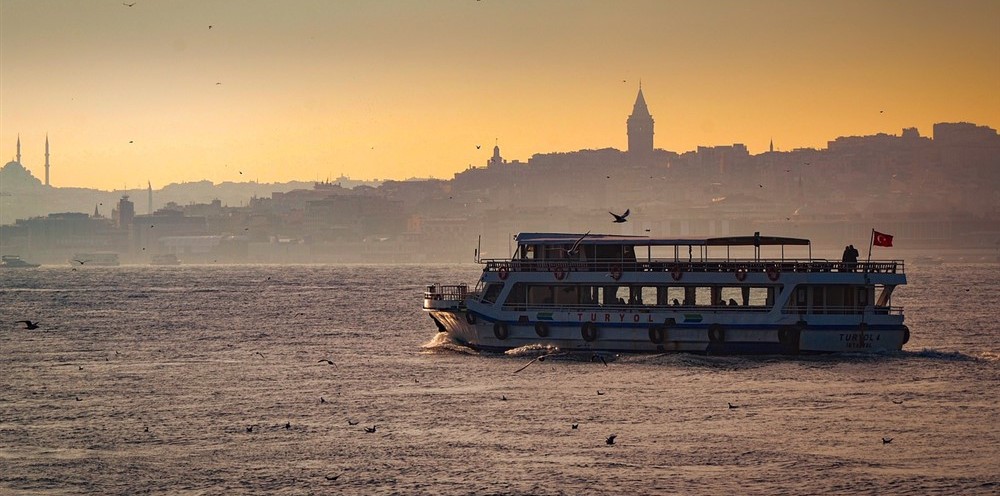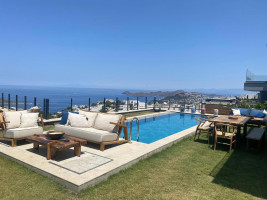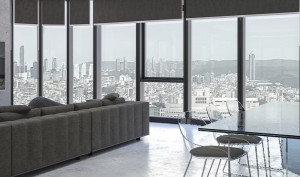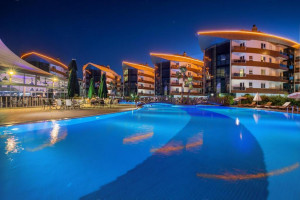Nestled in European Istanbul, the vibrant neighbourhoods of Beyoglu beckon visitors with rich history, diverse culture, and dynamic urban landscape. From the bustling streets of İstiklal Avenue to bohemian Cihangir, Beyoğlu is a melting pot of influences that has captivated travellers and foreign residents for centuries.
Beyoğlu's roots refer to ancient periods when the area was called Pera, a Greek term meaning "the other side" about the location across the Golden Horn from Constantinople (modern-day Istanbul). Over centuries, Pera evolved into a cosmopolitan hub, attracting merchants, artists, and intellectuals. Beyoglu was also the first place to have an underground railway.
During the Byzantine and Ottoman periods, Beyoğlu flourished in commerce and culture, with its strategic location along trade routes contributing to its prosperity. In the 19th century, the district underwent rapid modernisation, thanks to the construction of the Galata Bridge and the development of İstiklal Avenue, which became the main thoroughfare through the neighbourhood.
Beyoğlu occupies a strategic position bordered by the Golden Horn with stunning views to the north and the Bosphorus Strait to the East. The central location makes this area a key transportation hub and commercial centre. According to the latest census data, Beyoğlu is home to over 250,000 residents of various ethnicities, cultures, and backgrounds. The district's population also swells daily with commuters, tourists, and students. Indeed, if Beyoglu is on your radar, whether you are thinking of visiting or buying property, here is what to know.
Famous Landmarks and Neighbourhoods of Beyoglu in Istanbul
KEY POINTS
- The importance of Taksim Square
- Istiklal Caddesi Turkey’s busiest street
- The Cihangir and Galata Neighbourhoods
- Delights of the Cukurcuma Neighbourhood
- Tophane Neighbourhood
- About Tarlabasi neighbourhood
- Also, get to know neighbouring Besiktas
- Why foreign ex-pats love Beyoglu
- Further reading and useful information
Taksim Square- The Heart of Beyoglu
Locals view Taksim with high regard because the square holds the iconic Republic statue and is a familiar meeting place for friends. Built in 1928, the statue signified five years of the newly formed Turkish Republic after a bloody independence war against Allied forces. Taksim Square is also a key player in social gatherings, especially on New Year's Day, during the annual Labour Day, or during the LGBT parade. On the edge of Taksim Square sits the newly constructed Ataturk Cultural Centre, which displays the best Turkish architecture.
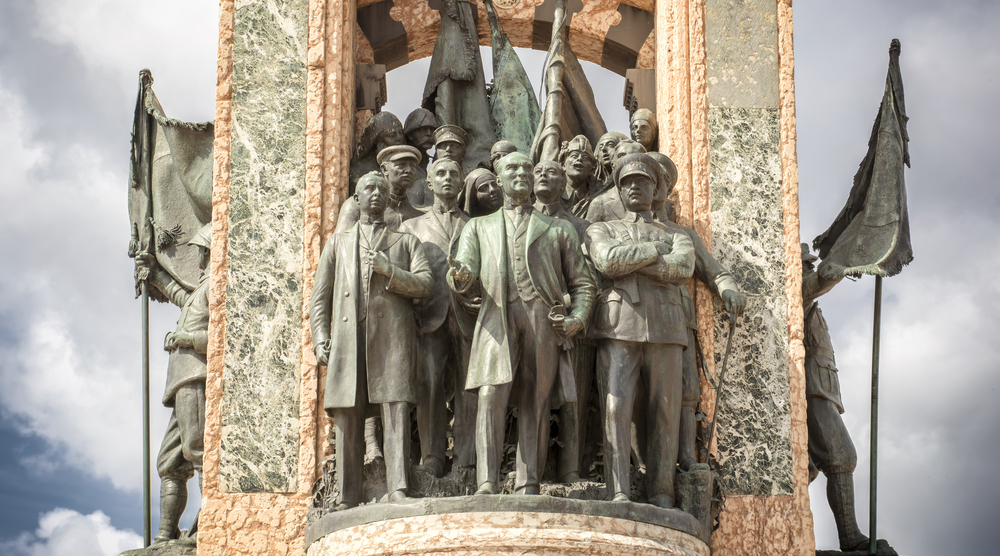
Istiklal Street - The Most Famous Steet in Turkey
Taksim is also the beginning of Istiklal Street, leading through the Beyoglu district and separating various neighbourhoods. Also called Turkey's most famous and busiest street, Istiklal is widely symbolised by the distinctive red tram in most travel guides and books and by the notable Galatasaray High School, a prestigious place of education in Istanbul. Stretching for 1.4 kilometres, everything and anything is to be found here.
Millions of pedestrians walk the street every day to access places of work or the untold number of shops, cinemas, and restaurants lining both sides. At night, the street stays as a bustling hub for bars, playing live music and traditional meyhanes serving food. These days, its reputation as Istanbul's centre of lifestyle and leisure is hard to ignore.
Further towards Taksim and built in the early 20th century in a Venetian neo-gothic style, the Saint Anthony of Padua church, the largest Catholic church in Turkey, promotes a surreal and humble experience, thanks to interior glass windows, immaculate wooden pews, and quiet ambience. Sitting directly on Istiklal Avenue and open daily for viewing, be silent when entering.
Focusing on evening entertainment, Cicek Pasaj, translating into Flower Passage, gained its name during the early 20th century from Russian immigrants selling flowers there. These days, as home to traditional meyhanes serving Turkish mezes (appetisers) and main dishes, the building lends to a more historic atmosphere while dining.
For delightful bars, head back to Nevizade Street, a favourite place for locals at night. Alternatively, further along Istiklal Avenue and near Galatasaray High School, down a few side streets is quirky French Street (Cezayir Street) that likewise offers traditional Turkish dining, often accompanied by live Turkish music. The street gained its name because of its unique architectural styles, but one cannot expect the ambience of France.
A few streets back, the Pera museum, which opened in 20005, portrays fine art in Turkey. Featuring ancient Turkish art, they also aim to promote up-and-coming artists with exceptional talent. The Tortoise Trainer, painted in 1906 by Osman Hamdi Bay, is their most famous painting. It was bought in 2004 for 3.5 million dollars and is an iconic piece often featured in most books about the Ottoman Empire.
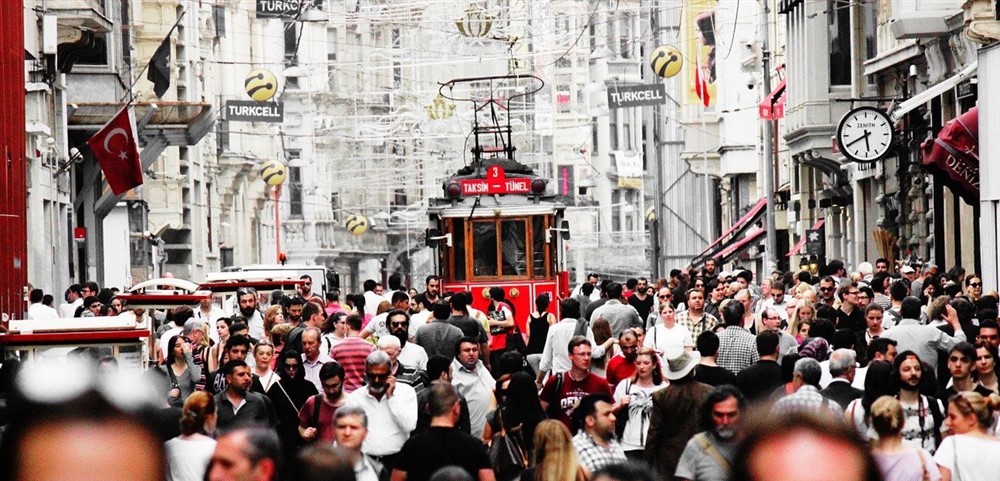
The Cihangir and Galata Neighbourhoods
The Bohemian Cihangir neighbourhood, with its distinct character, attracts foreign expats and up-and-coming artists eager to soak up creative vibes and meet like-minded people. Strolling through the streets is a welcome invite into the daily life of Turkey's biggest city.
Tucked away from the hustle and bustle of İstiklal Avenue, Cihangir exudes an air of bohemian chic and artistic flair. This eclectic neighbourhood has long been a magnet for writers, musicians, and creatives drawn to its leafy streets and picturesque squares. Explore trendy boutiques, artisanal cafes, and vintage bookstores, or soak in the laid-back atmosphere at charming parks. Cihangir is also home to thriving expat communities, adding to its cosmopolitan charm.
Meanwhile, the Galata district was once associated with European traders and the famous bank street. The Galata district will deliver whether you want Turkish cuisine, a historic atmosphere, luxurious hotels, or a popular spot to dine and have fun.
The Galata Museum of Whirling Dervishes is a fun history lesson into one of Istanbul's oldest dervish houses. This sect of Islam, widely seen by tourists through their sema dance, which involves rotating into a state of euphoria, has existed for hundreds of years, and the most notable pioneer is the world-famous poet Rumi.
Popular Galata Tower, with long queues of people waiting to enter, boasts beautiful views over the Golden Horn from the viewing platform at the top of the tower. Built-in 1348, traditional Turkish dance shows featuring Anatolian folklore and belly dancers make the Galata Tower a popular dining establishment at night. However, book tickets well in advance.
Sitting in a former synagogue, the Jewish Museum educates visitors about Jewish history in Istanbul. Focusing on the daily lives of men and women, photographs, and items belonging to previous residents take pride in the exhibitions. At the same time, the ethnographic section portrays events such as circumcisions and weddings.
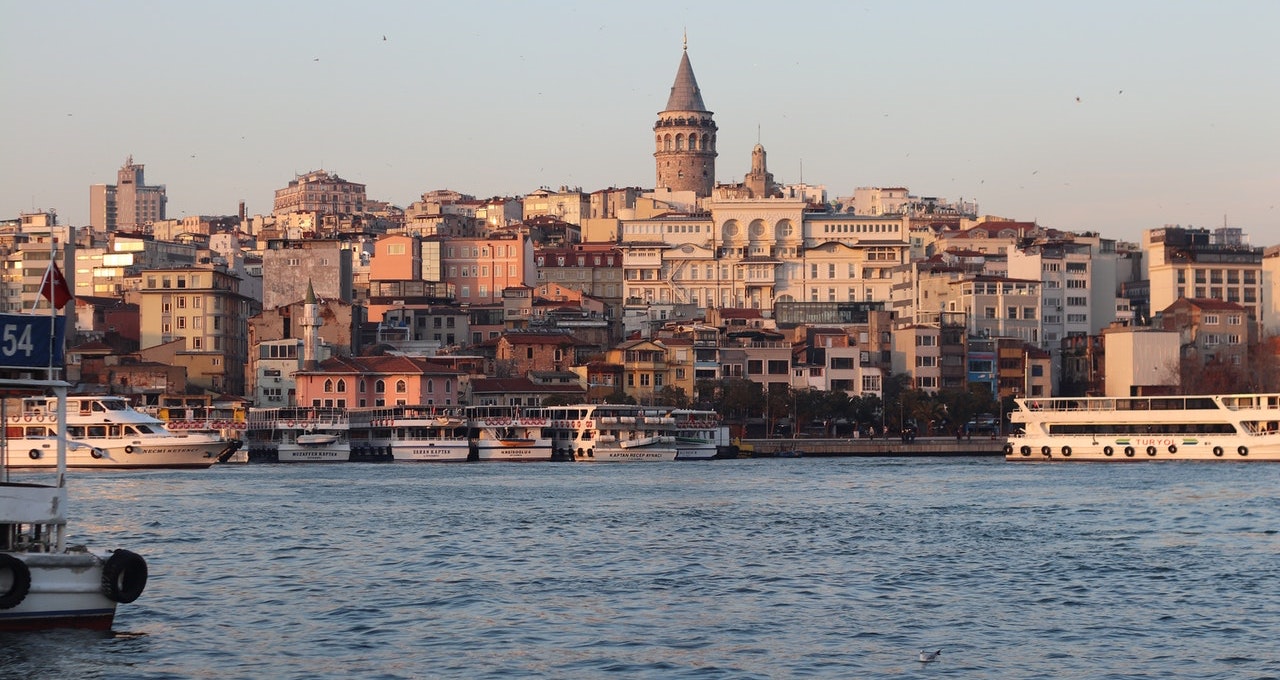
Discovering the Bohemian Enclave of Çukurcuma
Nestled within Beyoğlu is a different type of Turkish culture waiting to be explored – Çukurcuma. This charming neighbourhood, known for its bohemian atmospheres, popular restaurants, famous streets and eclectic mix of antique shops, art galleries, and quaint cafes, gives glimpses into Istanbul's artistic soul.
Çukurcuma's history dates back centuries, with the name derived from the Turkish word "çukur," meaning "pit" or "hollow," referring to the geographical terrain of the area. Once a quiet residential neighbourhood, Çukurcuma transformed in the late 20th century, emerging as a haven for artists, collectors, and creative minds.
During the 1980s and 1990s, Çukurcuma experienced a renaissance as young artists and entrepreneurs began to set up studios, galleries, and shops in the area. Today, the neighbourhood retains bohemian charm while attracting tourists eager to explore winding streets and discover hidden treasures.
One highlight of Çukurcuma is the thriving cultural scenes, characterised by diverse art galleries, antique shops, and vintage boutiques. Art enthusiasts will delight in exploring the neighbourhood's numerous galleries, showcasing works by established and emerging artists. On the other hand, antique lovers will find many hidden gems in Çukurcuma, with antique shops offering everything from vintage furniture and retro clothing to rare collectables and artefacts.
As you wander through the streets of Çukurcuma, you'll be captivated by the neighbourhood's architectural diversity, with mixed Ottoman-era buildings, Art Nouveau facades, and colourful street art. Many of the buildings in Çukurcuma have been lovingly restored, preserving their historical charm while incorporating modern touches. One iconic landmark in Çukurcuma is the Çukurcuma Hammam, a 16th-century Turkish bath. This beautifully restored hammam portrays Turkish bathing rituals in an atmospheric setting reminiscent of bygone eras.
Also, seek out the Museum of Innocence, a project by Orhan Pamuk, Turkey's most famous author, who portrays life in Istanbul in bygone days. After exploring, indulge in Çukurcuma's culinary delights at one of many charming cafes and restaurants. From cosy coffee shops serving freshly brewed Turkish coffee to trendy eateries offering international cuisine, Çukurcuma caters to all tastes and preferences.
For those seeking relaxation and rejuvenation, Çukurcuma is also home to several hammams and spas where you can unwind and pamper yourself with traditional Turkish treatments. Indulge in a traditional hammam experience to soothe your body and soul after sightseeing. Çukurcuma is conveniently located within walking distance from the bustling thoroughfare of İstiklal Avenue in Beyoğlu. Alternatively, take a leisurely stroll from the historic Galata Tower or hop on a taxi from other parts of Istanbul.
Exploring Tophane Neighbourhood in Beyoğlu, Istanbul
Tophane neighbourhood, within dynamic Beyoğlu, brims with history, culture, and contemporary energy. Nestled along the Bosphorus shores, Tophane evolved from military origins to a thriving art, design, and culinary delights hub. Tophane's name translates to "cannon foundry" in Turkish, reflecting the historical significance of Ottoman military production. During Ottoman times, Tophane was home to foundries where cannons and artillery were manufactured, contributing to the empire's military prowess.
In the 19th century, Tophane transformed as Istanbul modernised and expanded. The neighbourhood became known for eclectic mixes of Ottoman and European architecture, with elegant mansions, mosques, and palaces dotting streets. Today, the Tophane neighbourhood is a cultural hub that attracts artists, designers, and creatives. Historic buildings became galleries, studios, and exhibition spaces, showcasing contemporary art and design trends.
One highlight of Tophane's cultural scene is the Istanbul Modern Museum, Turkey's first Museum dedicated to modern and contemporary art. Housed in a renovated waterfront warehouse near the Galataport cruise ship section, the Istanbul Modern Museum features diverse collections of Turkish and international artworks.
Tophane is also renowned for its culinary offerings, with many cafes, restaurants, and eateries serving delicious fare. For authentic Turkish flavours, visit historic meyhanes (traditional taverns), where you can sample an array of mezes paired with raki, Turkey's beloved anise-flavoured spirit. Alternatively, head to one of Tophane's trendy cafes or restaurants for a modern twist on Turkish classics.
Architecture enthusiasts will appreciate Tophane's stunning blend of old and new, juxtaposing historic buildings against contemporary structures. Stroll along the waterfront promenade and admire elegant facades of Ottoman-era mansions, or wander through narrow alleys lined with restored townhouses and artisan workshops. One architectural standout in Tophane is the Nusretiye Mosque, an exquisite example of Ottoman Baroque architecture. Built-in the early 19th century, the mosque features ornate domes, intricate tilework, and a soaring minaret, attracting history buffs and photographers alike.
Tapestries of Tarlabaşı Neighbourhood in Beyoğlu
Nestled within bustling Beyoğlu, Tarlabaşı, an eclectic neighbourhood with a rich history and a dynamic cultural scene, glimpses into Istanbul's soul. Tarlabaşı's history dates back centuries, with the name translating to "field head" in Turkish, reflecting its origins as a rural area on Istanbul's outskirts. Over time, Tarlabaşı evolved into a densely populated urban neighbourhood, attracting immigrants from across Turkey and beyond.
During the late Ottoman and early Republic eras, Tarlabaşı boasted vibrant street life, bustling markets, and a diverse community. Narrow streets, lined with traditional Ottoman-style houses called konaks, housed families from various ethnic and religious backgrounds. The rich cultural diversity sees residents hailing from diverse backgrounds, including Kurds, Armenians, Syrians, and Roma people. This multicultural tapestry has contributed to Tarlabaşı's unique identity, with influences from various cultures evident in cuisine, music, and traditions.
Despite rapid urbanisation and gentrification in recent years, Tarlabaşı has retained authentic charm and character. Visitors immerse themselves in bustling markets, traditional tea houses, and lively squares. Tarlabaşı features much architectural heritage, with streets lined with historic buildings that reflect the neighbourhood's rich history. While many buildings have fallen into disrepair, efforts are underway to preserve and restore Tarlabaşı's architectural treasures.
One notable landmark in Tarlabaşı, the 19th century Surp Agop Armenian Church, reflects stunning Armenian architecture and testifies to multicultural heritage to remind everyone of Istanbul's diverse past. In recent years, Tarlabaşı has emerged for street art and creative expression. Colourful walls and alleyways serve as a canvas for local and international artists, with murals and graffiti adorning neighbourhood buildings.
Tarlabaşı Community Center is pivotal in fostering creativity and community engagement, offering workshops, events, and exhibitions for residents and visitors alike. From photography exhibitions to poetry readings and music performances, something exciting always happens in Tarlabaşı. Tarlabaşı is conveniently located within walking distance from bustling İstiklal Avenue.
Also, Visit Besiktas Next Door
Although Istanbul's Beyoglu district appeals to many, sitting right next door is the Besiktas district, offering blended tradition and modernity, history and innovation. Besiktas is home to historical landmarks and thriving business districts and embodies Istanbul's dynamic spirit. Besiktas is where the Ottomans moved to after they left for the famed Topkapi Palace for their new home, Dolmabahce Palace. There are also many exciting neighbourhoods in this district as well.
Ortakoy: Nestled along the Bosphorus shores, Ortakoy, a picturesque neighbourhood known for its bohemian atmosphere and stunning waterfront views, features the iconic Ortakoy Mosque, with intricate architecture and scenic backdrop. The neighbourhood's narrow streets are dotted with artisan shops, trendy cafes, and bustling markets, making Ortakoy popular with locals and tourists.
Bebek: Bebek, meaning "baby" in Turkish, exudes an air of tranquillity and sophistication. Situated along the Bosphorus, this upscale neighbourhood boasts luxurious waterfront mansions, chic boutiques, and gourmet restaurants. Bebek Park offers peaceful retreats, while lively Bebek Marina buzzes with activity as yachts and boats dock along the shoreline.
Levent: Levent, Istanbul's financial and commercial epicentre with towering skyscrapers dominating the skyline, is home to numerous multinational corporations, shopping malls, and luxury hotels. Levent is where business meets pleasure, and bustling streets lined with boutiques, restaurants, and modern office buildings attract diverse mixes of professionals and visitors.
Akaretler: Akaretler, located near Besiktas's bustling centre, is a hidden gem steeped in architectural beauty. Once home to the Ottoman palace's servants, the neighbourhood has been meticulously restored and transformed into a trendy enclave of cafes, boutiques, and art galleries. Cobblestone streets and elegant row houses offer a glimpse into Istanbul's past while catering to Istanbul's contemporary lifestyle.
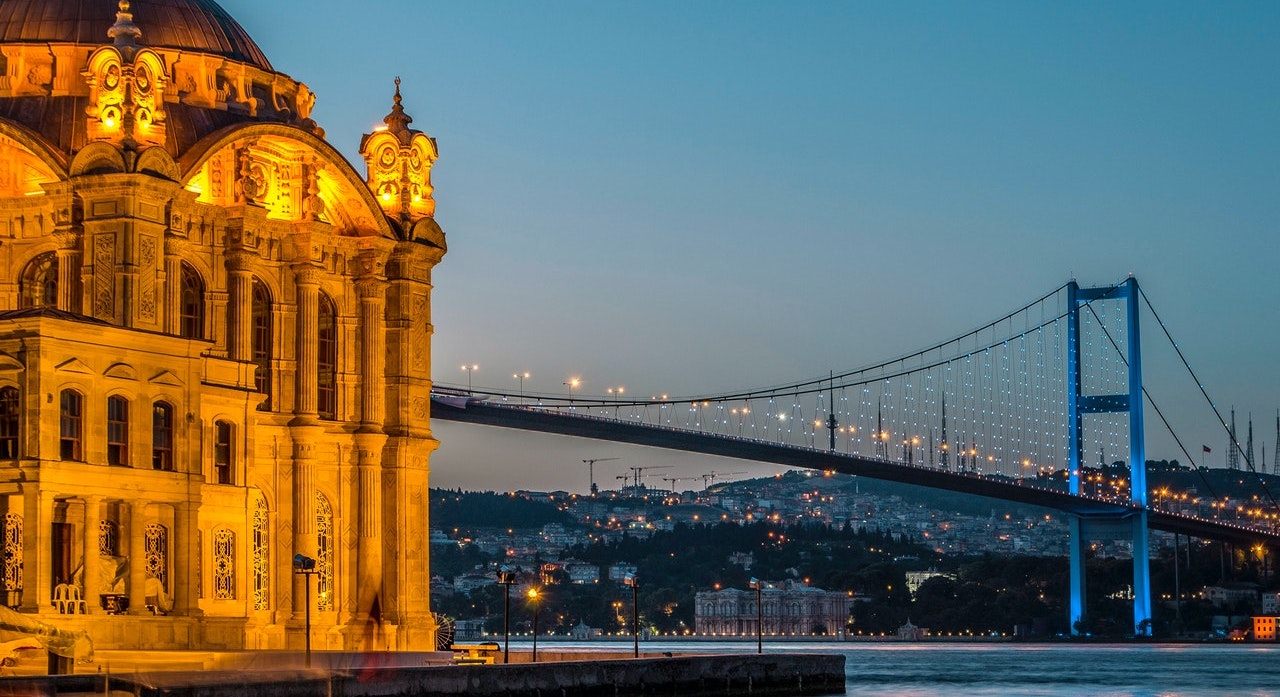
Why Foreigners Like Beyoglu
Beyoğlu is a magnet with expats drawn to vibrant atmospheres, rich cultural heritage, and cosmopolitan lifestyle. From historic neighbourhoods to bustling thoroughfares, Beyoğlu offers blended charm and modern amenities that appeal to global expatriates. The reasons why are plentiful.
Cosmopolitan Vibe: People flock to Beyoğlu for unbeatable cosmopolitan vibes, thanks to a diverse community of expatriates from various countries, creating a melting pot of cultures and perspectives. Whether you're from Europe, Asia, Africa, or beyond, Beyoğlu welcomes you with open arms and provides a sense of belonging in a dynamic urban environment.
Cultural Diversity: Beyoğlu's cultural diversity is another draw. From the historic streets of Galata to bohemian Cihangir, the district offers a rich tapestry of lifestyle experiences. International restaurants, art galleries, and cultural events abound, providing residents endless opportunities to explore and connect with global communities.
Convenience and Connectivity: Beyoglu's connectivity of Beyoğlu makes the area an attractive choice, especially alongside the amenities, including international schools, healthcare facilities, and shopping centres, making the district an ideal place for expatriates and their families.
Historic Charm: From the iconic Galata Tower to the cobblestone streets of Karaköy, history and architectural beauty sit on every corner. Living in Beyoğlu allows foreign residents to immerse themselves in Istanbul's rich cultural heritage while enjoying the modern comforts of urban living.
Booming Real Estate Market: Beyoglu's booming real estate market is another factor luring foreign residents. From luxury apartments with panoramic Bosphorus views to charming historic buildings ripe for renovation, Beyoğlu offers many housing options to suit different budgets and lifestyles. Foreign residents increasingly invest in property in Beyoğlu as they seek to establish roots.
Property in Beyoglu – Istanbul: Are you ready to find your perfect home in Beyoğlu, Istanbul? Look no further! Our extensive portfolio offers diverse properties ranging from charming apartments to luxurious penthouses. This ensures you'll find the ideal space to call your own in this dynamic neighbourhood. Our properties are strategically located to provide the best Beyoğlu living. With a mix of modern amenities, historic character, and stunning Bosphorus views, our portfolio has something to offer every discerning buyer.
Golden Horn of Istanbul: From the majestic Galata Bridge to historic neighbourhoods lining the shores, our article delves deep into the heart of Istanbul's Golden Horn, uncovering hidden gems and iconic landmarks. The Golden Horn separates the two parts of European Istanbul, and the neighbourhoods are integral to Istanbul's fabric.
Bosphorus of Istanbul: Are you ready to be transported to the enchanting Bosphorus shores, where East meets West in a symphony of beauty and culture? Dive into our latest article and immerse yourself in the timeless allure of Istanbul's iconic waterway. From majestic palaces and historic landmarks to boats and ferries traversing the waters, Istanbul's Bosphorus is worth getting to know if you want to discover more about the neighbourhoods of Beyoglu in Istanbul.
